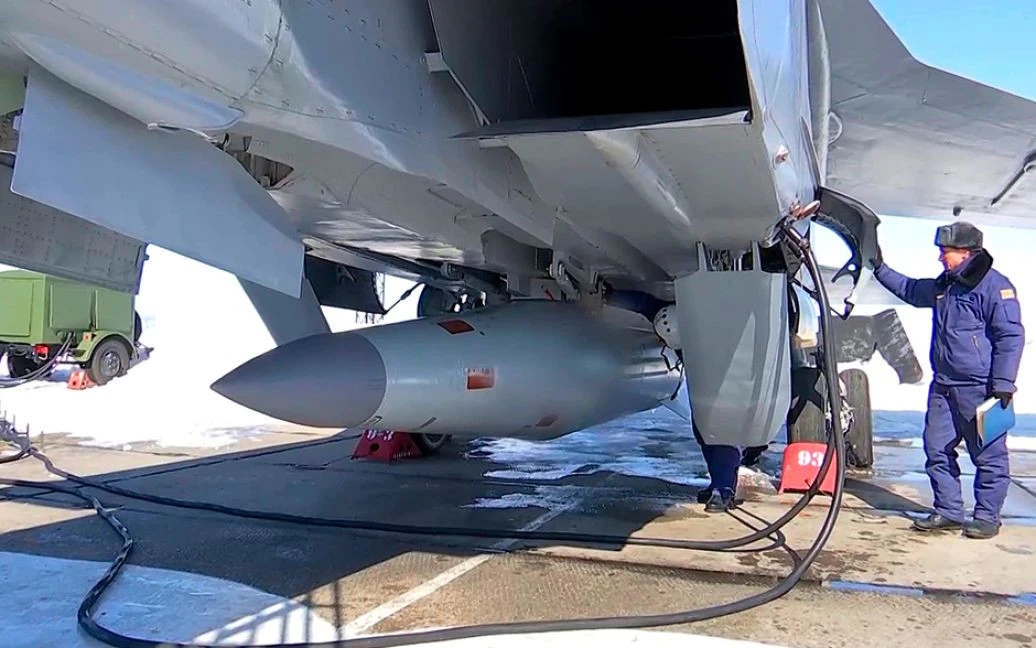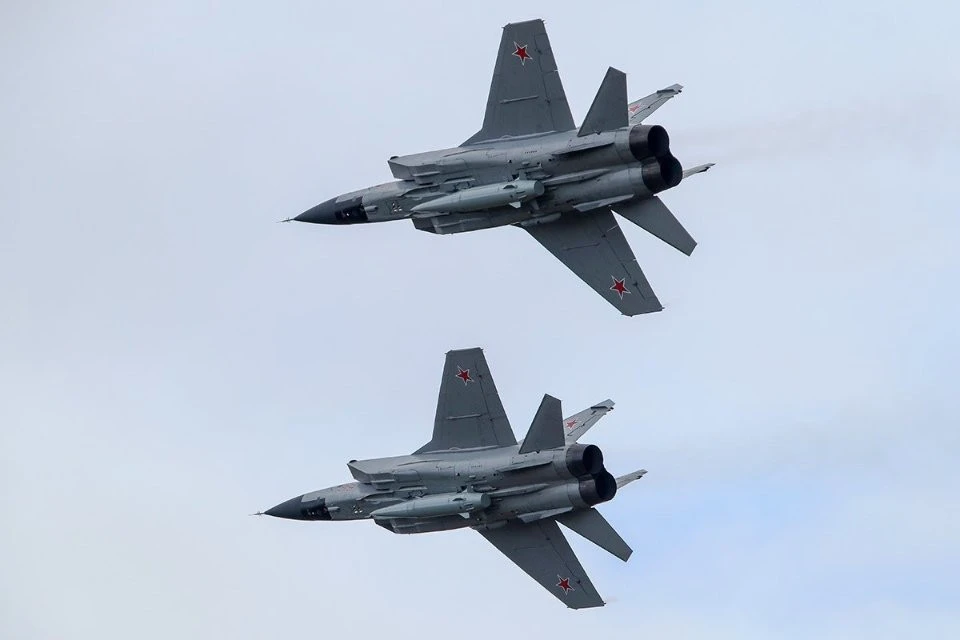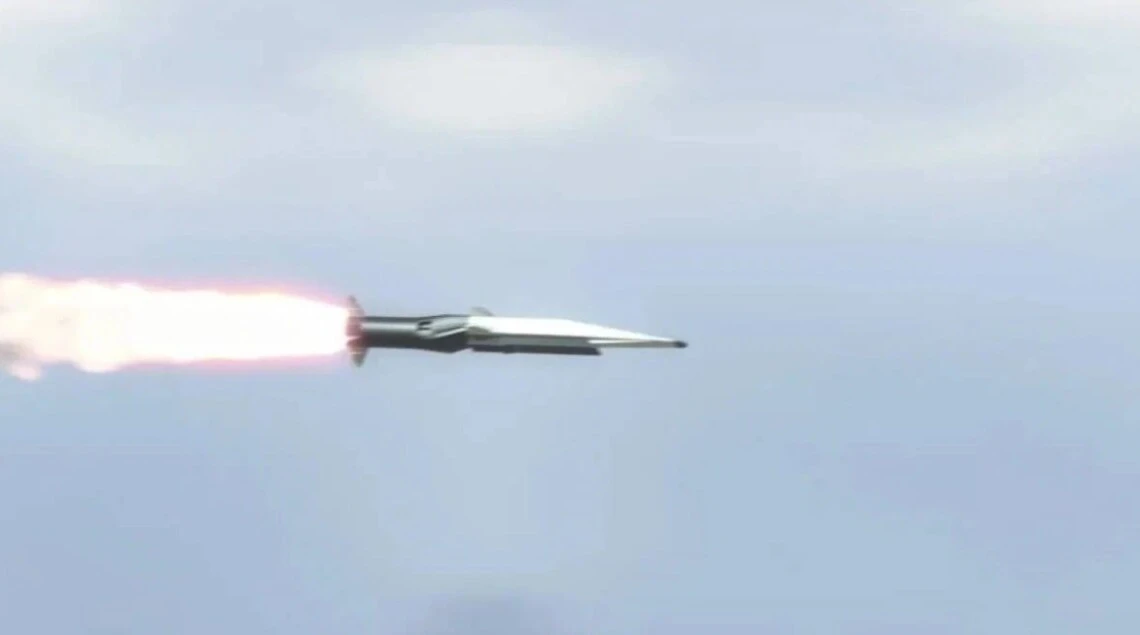
25 Russian fastest missiles are shot down in Ukraine: What makes Russian Kinzhal missiles dangerous
As soon as a MiG-31 takes off somewhere in Russia, an air raid is announced across the entire territory of Ukraine and citizens are urged to seek shelter. The aircraft is a carrier of the Kh-47M2 Kinzhal, a Russian aerial ballistic missile that can carry a nuclear warhead. On 2 January, Kyiv was targeted by 10 such missiles, all of which were shot down by Ukrainian air defense
On 2 January, Ukraine suffered another massive missile attack by Russia. Civilian and critical infrastructure, industrial and military facilities were attacked. The main target of the attack was Kyiv.
Espreso will explain the history and features of this missile, which, according to the Russians, "has no analogs."
History of the development

Photo: Wikipedia
Information regarding the progress of the Kh-47M2 Kinzhal's development is currently classified. Nonetheless, there are indications that this missile may have been derived from the 9K720 Iskander-M platform, as Russia initiated a military equipment modernization initiative during the 2010s. The Votkinsk plant, responsible for manufacturing Iskanders, is believed to be the developer. Both missiles share similarities in terms of size and dimensions.
The Kinzhal missile system was reportedly introduced into service at the airfields of the Southern Military District of the Russian Federation in 2017. However, it wasn't publicly showcased until March 2018 when Russian President Vladimir Putin presented it, once again trying to demonstrate the "might" of the Russian army.
The Kinzhal missile is reliant on a carrier aircraft for takeoff. It is carried by modified MiG-31 long-range supersonic fighter interceptors, each equipped to carry one missile. Additionally, the Tu-22M3 strategic aircraft can carry four missiles, and there is potential for the Tu-160 to carry eight missiles. Once launched, the Kinzhal missile can achieve hypersonic speeds and perform agile maneuvers. Its design is tailored to evade enemy air defenses and rapidly strike designated targets within a short timeframe.
Characteristics and design of the Kinzhal

Photo: Wikipedia
These missiles are the fastest in the Russian arsenal and can fly at hypersonic speeds (Russian claims suggest over 10,000 km/h, or 10 times the speed of sound, although experts remain skeptical). Kinzhals are also designed for in-flight maneuverability. Weighing 4.3 tons, these missiles carry a warhead weighing around 500 kg. They measure 7.2 meters in length and have a diameter of 1.2 meters, with a wingspan of 1.6 meters to ensure flight stability.
Thanks to a powerful solid-fuel rocket engine, it is capable of accelerating up to 3-4 km per second when approaching a target. The maximum range is 2,000 km when launched from a MiG-31 or 3,000 km when launched from a Tu-22M3. The flight altitude at the moment of reaching hypersonic speed is 20 km. Its precision stands at a 1-meter margin of error.
The exact quantity of Kh-47M2 missiles produced remains undisclosed. As of early 2023, Ukraine's Defense Minister reported that Russia possessed 53 of these missiles, however, their production persisted despite the imposed sanctions.
Similar missiles
The Kinzhal is not a completely new development, but a modified version of the Iskander ballistic missile. It was redesigned to be launched from aircraft. This allows it to reach higher launch speeds and increases the range of the missile. However, some experts argue that even if the Kinzhal is technically a hypersonic missile, it is still considered outdated compared to modern developments such as the Chinese DF-ZF or the US Hypersonic Attack, which can literally fall from space due to their altitude.
According to NATO's 2020 report on hypersonic weapons, the Kinzhal should not be classified as a true hypersonic missile. Despite the Kremlin's assertion of its Mach 10 capability, NATO experts highlight that the missile's actual speed does not match this claim. Moreover, various military analysts argue that the Kinzhal does not fulfill the criteria of a hypersonic weapon but rather qualifies as an air-launched ballistic missile.
Kinzhal’s applications

Photo: Wikipedia
With the outbreak of a full-scale war, Ukraine, unfortunately, became a testing ground for the entire arsenal of Russian missile weapons: Iskander, Kalibr, Kh-101, Kh-55, Kh-555, and Kh-47M2 Kinzhal cruise missiles.
For the first time, the Russian Defense Ministry reported the use of Kinzhals in the war with Ukraine on March 18, 2022, when it allegedly destroyed an underground military depot of Ukraine in Prykarpattia. On May 9, 2022, three such missiles were launched from Tu-22M3 strategic aircraft at civilian targets in the Odesa region, injuring two people and destroying five tourist infrastructure facilities. During this period, the Pentagon estimated that Russia had launched over 10 hypersonic missiles within the initial three months of the conflict.
On August 7, 2022, Russia launched another attack using Kinzhal missiles, targeting facilities in the Vinnytsia region. On September 14, 2022, a Kinzhal missile inexplicably fell within Russia’s Stavropol Krai near the village of Kendzhe-Kulak. During another missile strike on January 26, 2023, the Russian military used two MiG-31Ks to launch Kinzhal missiles at targets in Kyiv and Zaporizhzhia. A record number of Kinzhal missiles (6 missiles) were used during a massive missile strike on critical infrastructure on the night of March 8-9, 2023. On August 11, 2023, reports emerged of casualties and injuries in Prykarpattia resulting from a Kinzhal missile attack.
What makes it dangerous?

Photo: Wikipedia
The primary threat posed by the Kh-47M2 Kinzhal is its speed and maneuverability, rendering it a challenging target for air defense systems to intercept. Certain Russian military bloggers have even labeled the Kh-47M2 as virtually immune to interception. Nevertheless, as often happens in “no analogue” cases, reality has shown a different outcome.
Indeed, Ukrainian air defense was initially ill-equipped to counter the threat posed by Kinzhal missiles. However, the situation changed with the deployment of the US Patriot air defense system to protect Kyiv's airspace. A significant turning point came on May 4 when news emerged of the successful interception of a Kinzhal missile. This missile, fired from a Russian MiG-31K within Russian territory, was intercepted over the skies of the Kyiv region. This fact was also confirmed by U.S. government sources and an official Pentagon spokesman. Interestingly, the intercepted Kh-47M2 missile was intended to target the Patriot system itself. This marks a significant shift from the previous perception that American air defense systems were incapable of countering the Kinzhal threat. The events of May 16, 2023, further underscored this change as the Ukrainian Armed Forces announced the successful interception of 27 aerial targets during a nighttime missile attack on Kyiv, including the downing of six Kinzhal missiles.
On August 12, Ukrainian Air Force spokesman Yuriy Ihnat said that since the beginning of Russia's full-scale invasion, Ukrainian air defense has shot down a total of 14 Kinzhal airborne ballistic missiles.

Photo: Wikipedia
However, dozens of such Patriot systems would be needed to cover the entire Ukrainian sky, and even this would not give a 100% guarantee of shooting down Kinzhal missiles. Therefore, when planes with this missile take off, air raid alerts will be activated throughout Ukraine to minimize the human casualties that may result from hits.
- News














































